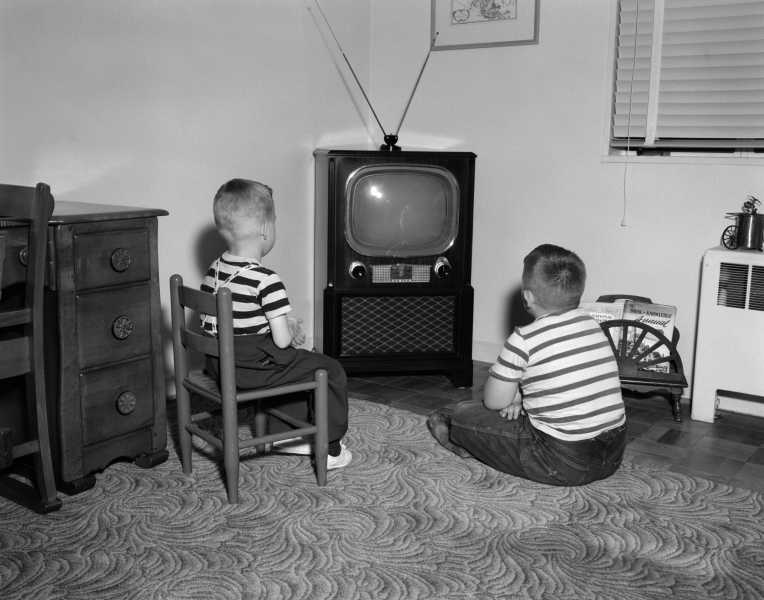Do you want to watch a movie or to live out a petit-bourgeois fantasy of Sardanapalan excess?

(Photo by ClassicStock/Getty Images)
The summer is upon us, and no one is going to the movies.
Last weekend, the box-office charts were a study in sluggishness: The Garfield Movie was in the top spot with a paltry $14 million, and Furiosa: A Max Max Saga came in second with a pitiful $10 million. All told, the returns had declined 69 percent from the equivalent weekend last year, according to the Hollywood Reporter.
How to explain this state of cinematic lethargy? It would be nice to imagine that moviegoers have suddenly, out of nowhere, developed discerning standards. Perhaps audiences have finally grown tired of allegedly amusing animated features with paunchy felines. Maybe viewers have at last been worn out by violent visions of apocalyptic future worlds.
Instead, I wonder if the explanation is far more pedestrian: What if declining movie attendance has less to do with the movies than with the places where they are being exhibited?
Here, I write from some experience.
I have spent more hours in movie theaters than I would care to admit or is probably spiritually advisable. I was born in 1983, the peak of the multiplex era, and my earliest moviegoing experiences were in those cavernous facilities that were often adjacent to, and sometimes incorporated into, shopping malls.
Multiplexes befit the decade of material abundance that produced Ronald Reagan’s presidency, the movie Wall Street and the book The Art of the Deal. To a degree that must have seemed revolutionary at the time, multiplexes were truly full-service movie theaters. Breaking with the single-screen model of earlier movie theaters, multiplexes were engineered to house multiple screens—sometimes as many as twelve, twenty or more—that could show numerous movies concurrently throughout the day.
The complexes were designed on the hopeful assumption that they would receive heavy use. Undoubtedly the ubiquitous wall-to-wall dark carpeting in lobbies was chosen because it was more forgiving of soda spills and popcorn tip-overs; surely the concrete floors in most individual theaters were chosen for their ease of clean-up, too.
Going to a multiplex in the 1980s and ’90s was not like entering heaven—as Woody Allen once compared, in his lovely little movie Radio Days, the experience of walking into Radio City Music Hall—but it was a perfectly serviceable way to see a movie. Back then, multiplexes were functional, practical and largely inoffensive; some remnants of refinement, such as seats upholstered in some velvet-like material, remained.
The situation is far different today.
Multiplexes still dominate the moviegoing landscape, but they have lost their utility—their benign neutrality—in a desperate attempt, on the part of their owners, to make them more comfortable, relaxing and inviting. In fact, present-day multiplexes are none of these things. They are, instead, grotesque monuments to self-indulgence.
Ironically, many of the changes are predicated on creating a kind of faux-luxury experience. For instance, no longer can moviegoers buy a ticket, survey the theater and pick a seat. These days, most multiplexes insist on reserved seating that commits ticket-buyers to a particular seat ahead of the showing. This sounds fancy—like making dinner reservations, or getting box seats at the opera—but, in practice, it diminishes self-reliance; gone is the strength of character involved in “picking a better seat” just before the feature begins.
In a further bid for luxury, many multiplexes have traded traditional seating for “recliner”-style seating into which moviegoers can sink, sometimes so far back that they can prop their shoes on a footrest. Despite encouraging spectators to position themselves virtually in a supine position, these recliners are often outfitted with trays intended for the placement of not just popcorn or candy (which is OK) but actual food on the order of burgers or chicken tenders (which is never, ever OK). The trays themselves, when swiveled in front of the occupant, render these recliners something akin to a child’s highchair.
Subscribe Today Get daily emails in your inbox Email Address:
These purported improvements to multiplexes suggest an attempt to tap into the American middle-class obsession with “eating out” that was defined in Paul Fussell’s trenchant 1983 book Class: A Guide Through the American Status System: “A fixation with both middles and proles, since it gives you a chance to play King and Queen for a Day, issuing orders, being waited on, affecting to be somebody.”
Yet, in the end, these innovations do not confer royal status on moviegoers—instead, they contribute to the infantilization of all of us. There we are, trapped in a recliner, satiated with cheap processed food and blasted by the latest would-be blockbuster.
What is keeping me from the movie theaters are the movie theaters. I wouldn’t want to see any of my favorite movies—Rear Window, She Wore a Yellow Ribbon, The Bells of St. Mary’s, To Kill a Mockingbird—in such settings. In fact, now that I think about it, the only kind of movie that might be disposable enough to see under such circumstances is one starring Garfield.
Sourse: theamericanconservative.com